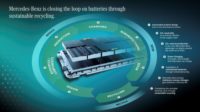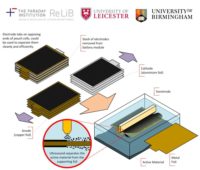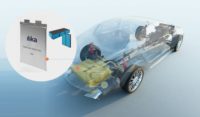GRUGLIASCO, Italy—Comau is developing an automated EV battery disassembly cell as part of the EU’s Flexible Battery Dismantling (Flex-BD) project, which hopes to reuse more than 1 million discarded batteries by 2030. The goal is to develop a robotic system that automates the entire process of dismantling worn-out batteries using a highly flexible, repeatable and standardized process. It will enable automakers and suppliers to reduce waste and optimize the reuse of raw materials contained within battery packs.
Flex-BD represents a significant improvement to manual handling processes that often include repetitive and heavy tasks, in addition to contact with potentially harmful substances. It makes the recovery of battery modules and their components more efficient and sustainable, while having a positive impact on workers’ health and safety.
With second-life battery repurposing, on the other hand, the fully automated manipulation of low-charge batteries minimizes risks to both operators and the dismantling equipment. Unlike the materials recovery and recycling process, in which a battery is completely discharged and destroyed, second-life battery repurposing is done while maintaining a low but active battery charge.
“Our work with the Flex-BD project leverages [our long standing automation expertise in the development of flexible, scalable and sustainable processes,” says Pietro Gorlier, CEO of Comau. “By expanding our smart automation solution to include second life repurposing of high-power batteries, many of which have a residual capacity of up to 80 percent, [we are] making a concrete contribution to the realization of truly sustainable mobility.”
Comau’s system uses a heavy-duty, six-axis NJ robot that automatically executes its path and changes its end-effectors based on the required application. In a typical recycling application, for example, the robot unscrews the battery cover, changes grippers to remove the cover, re-attaches the screwdriver to unscrew the modules and then using its gripper moves the pieces to a dedicated storage area.
Flex-BD is designed around a highly flexible programming approach based on a reduced use of codes, state-of-the-art environmental perception techniques and the robot’s reactive capacity. The entire dismantling cycle is defined through CAD. The use of LowCode programming also allows operators to quickly and easily redefine the cycle with no need to reprogram the robot.



